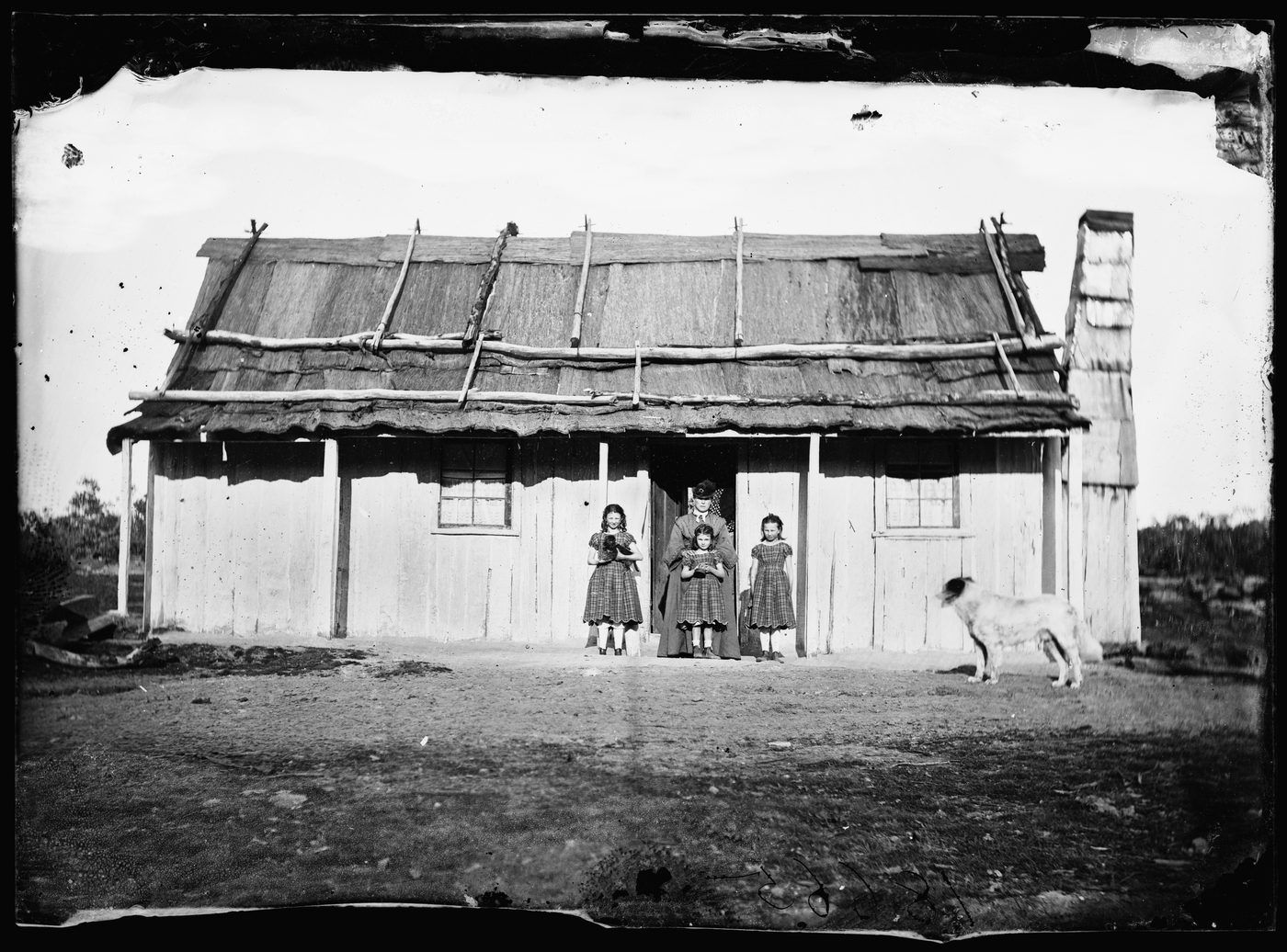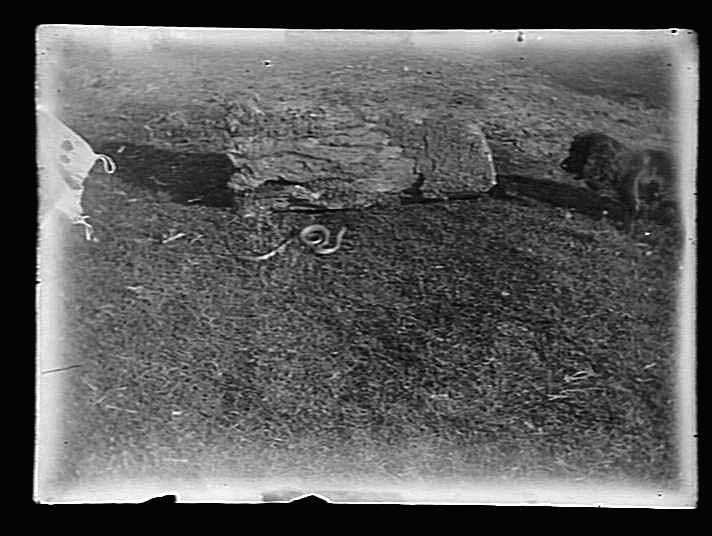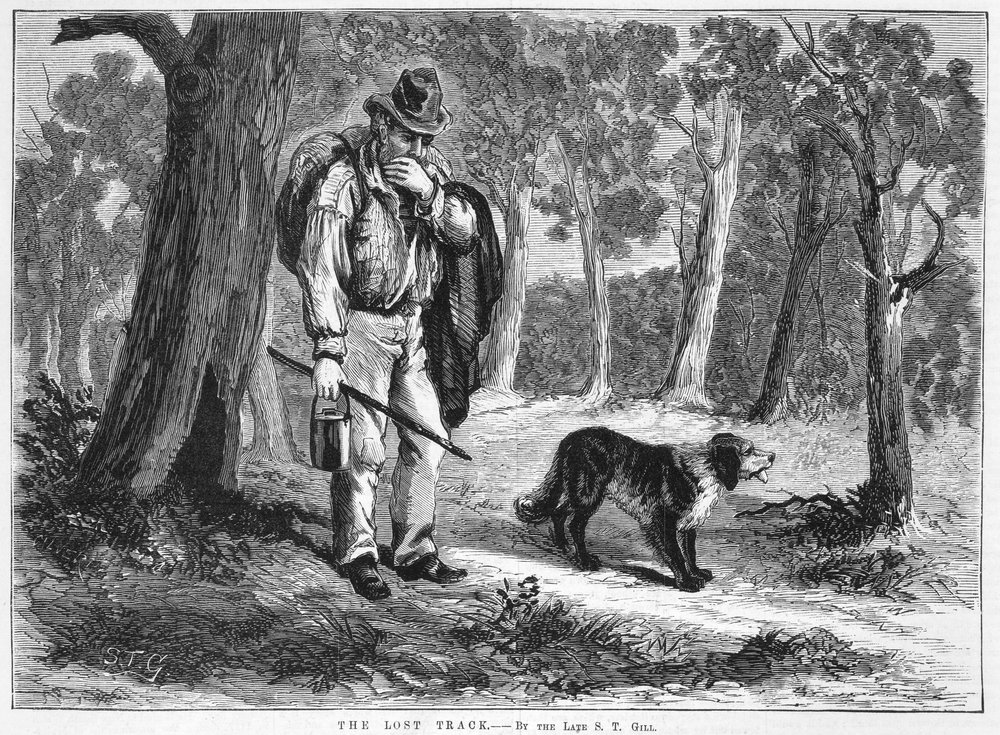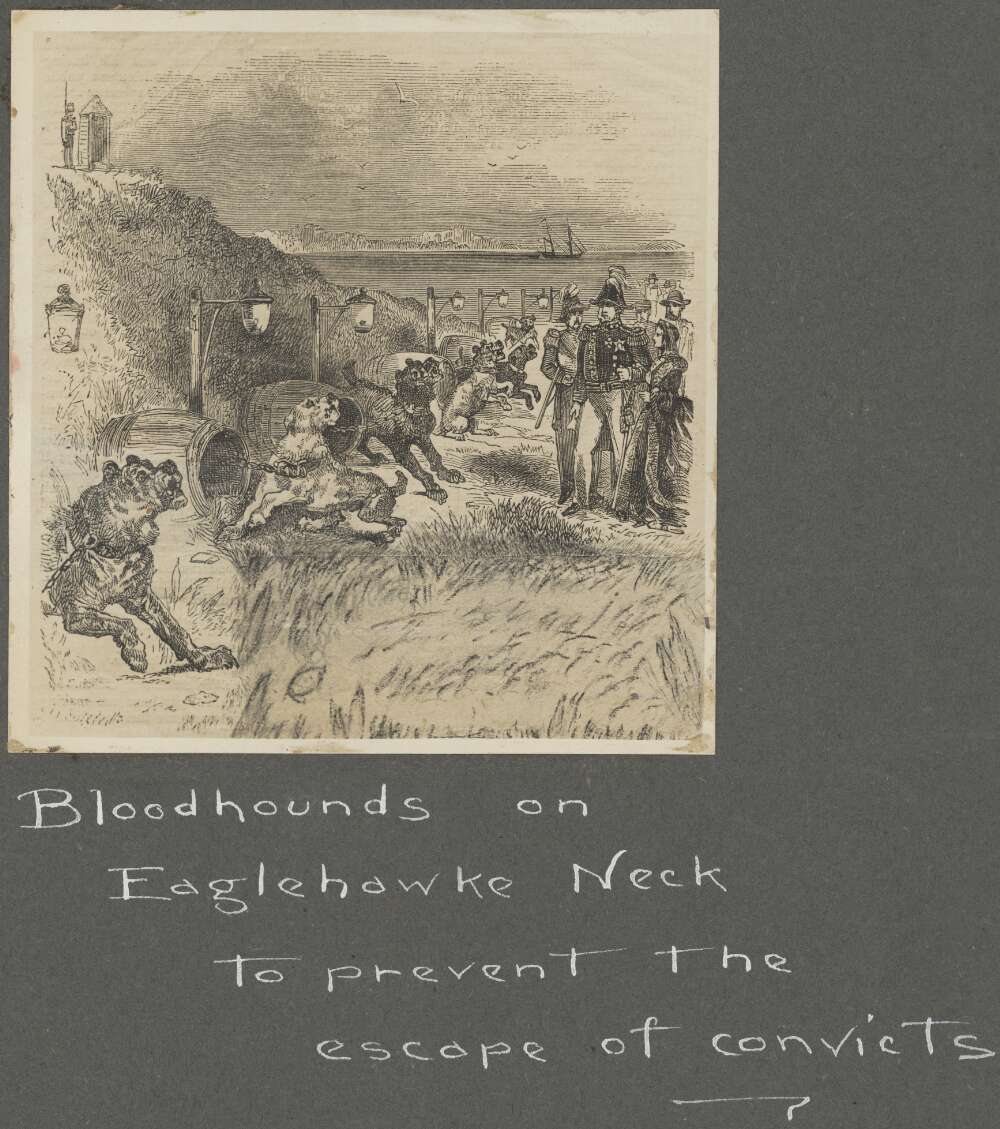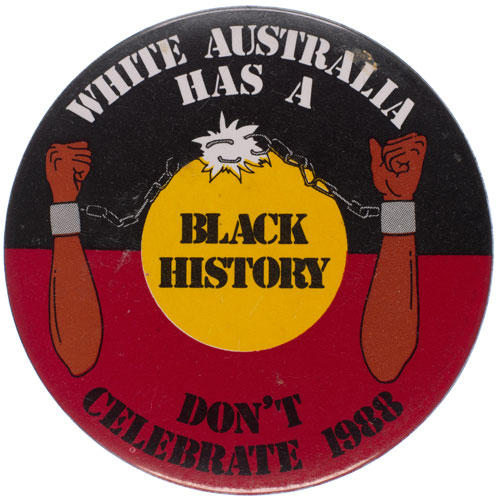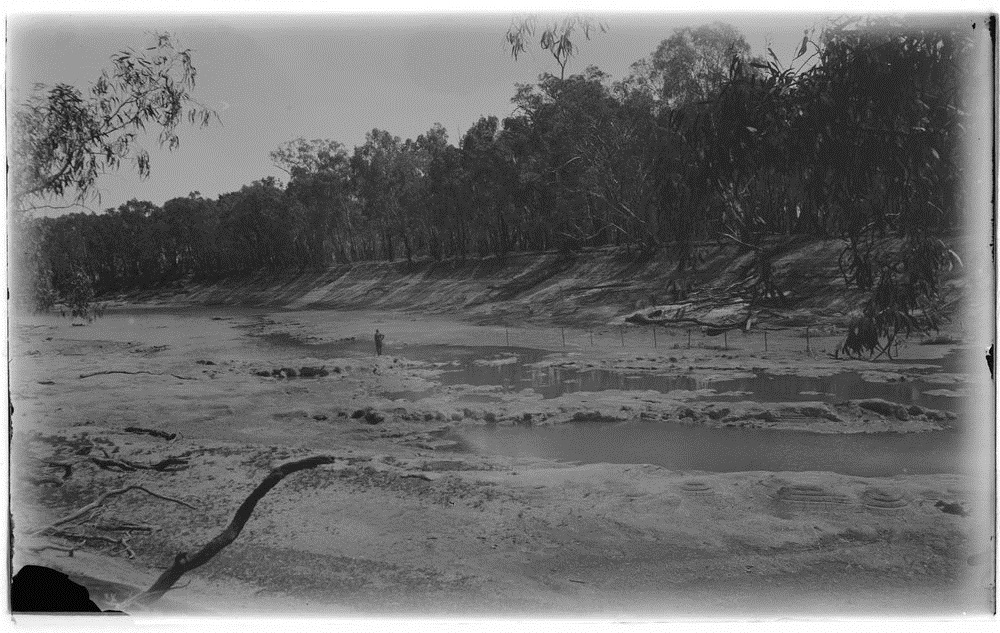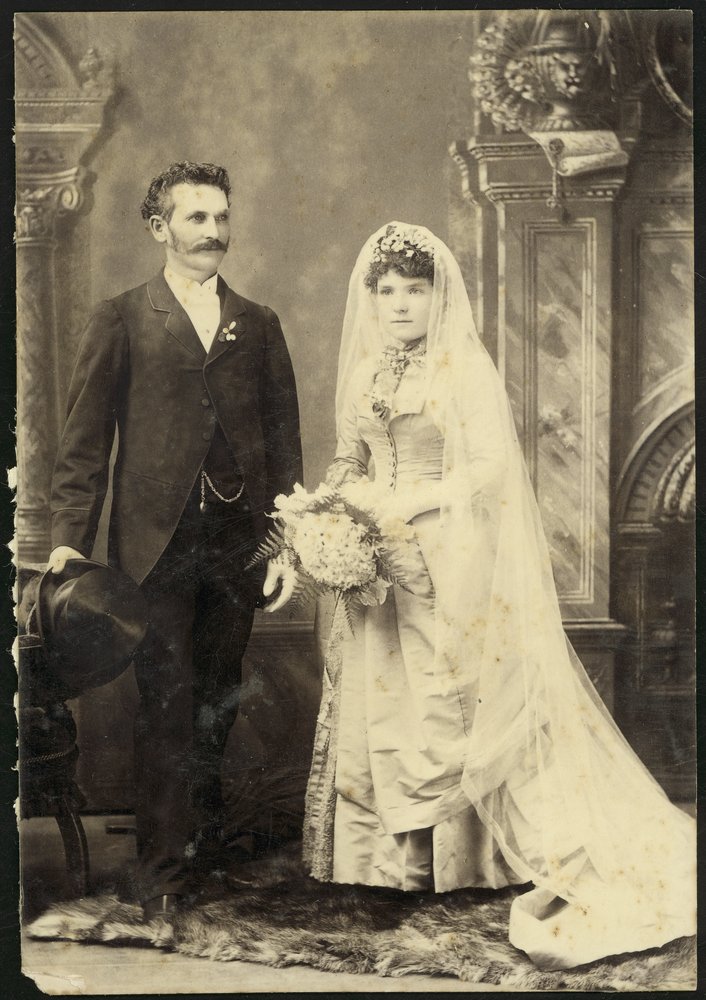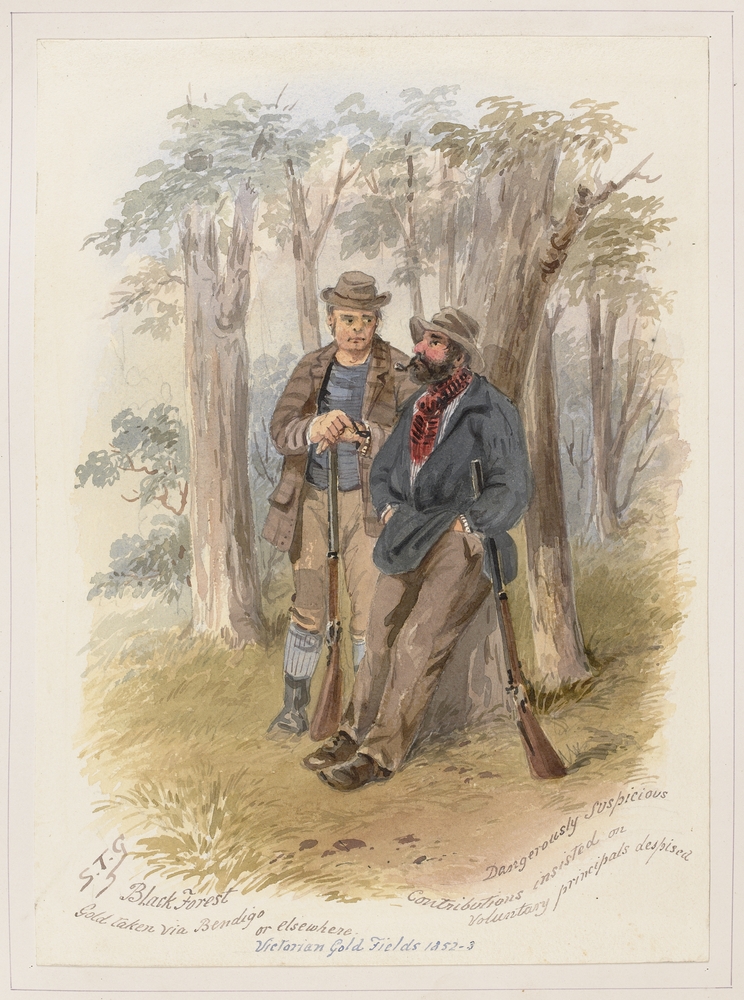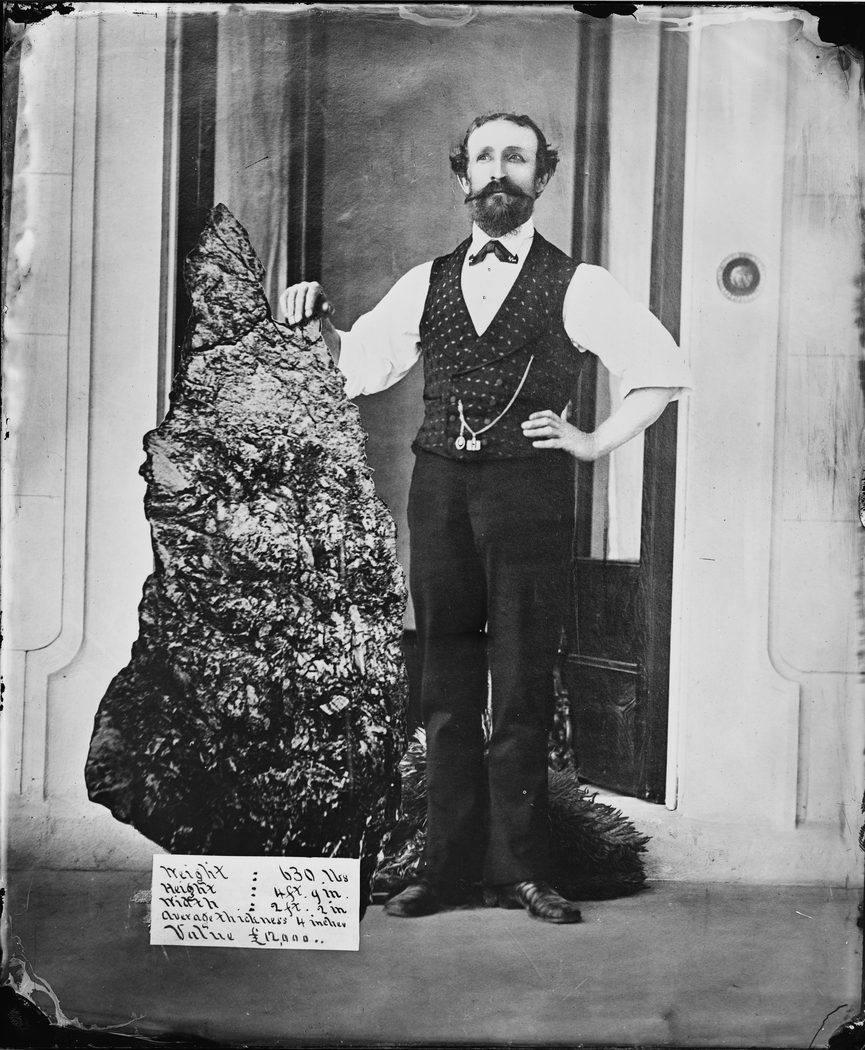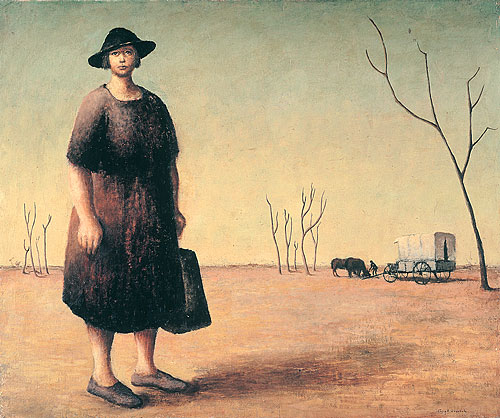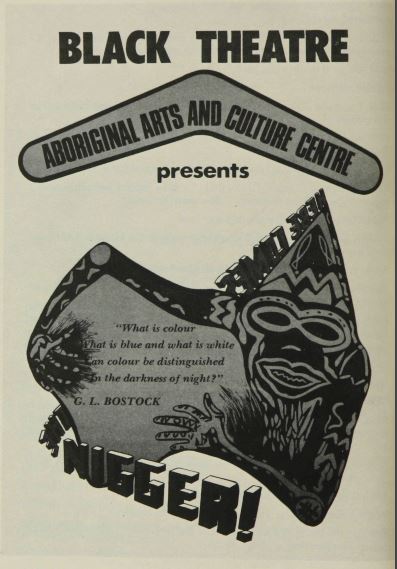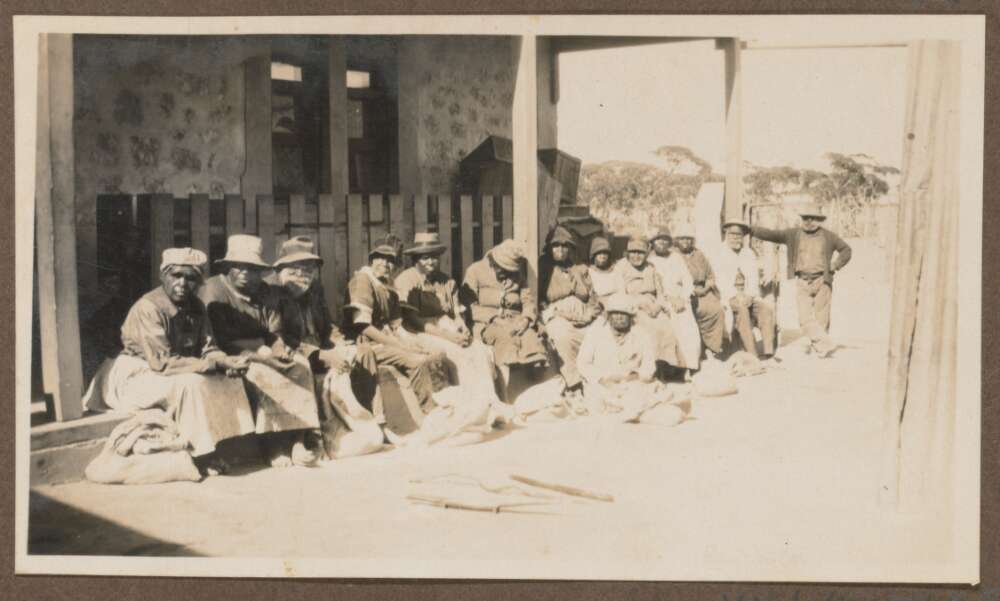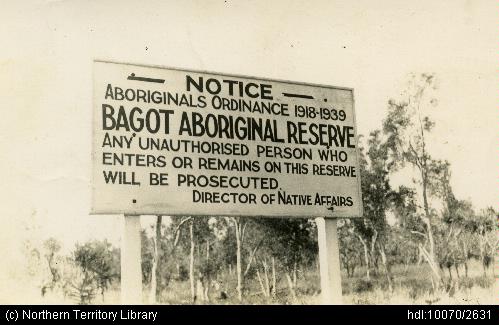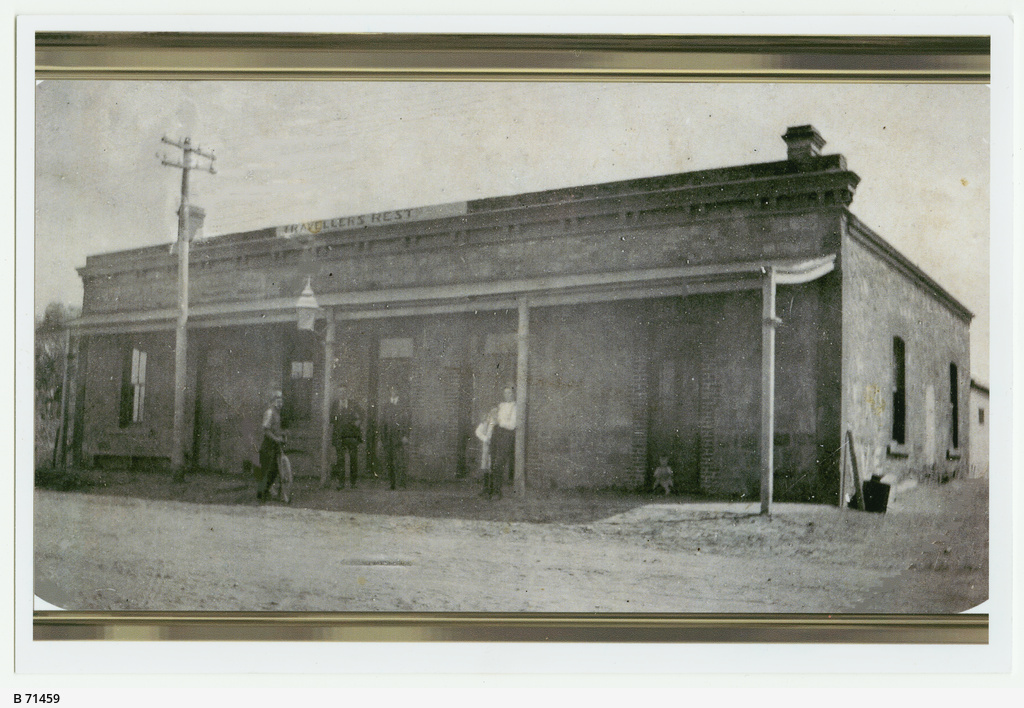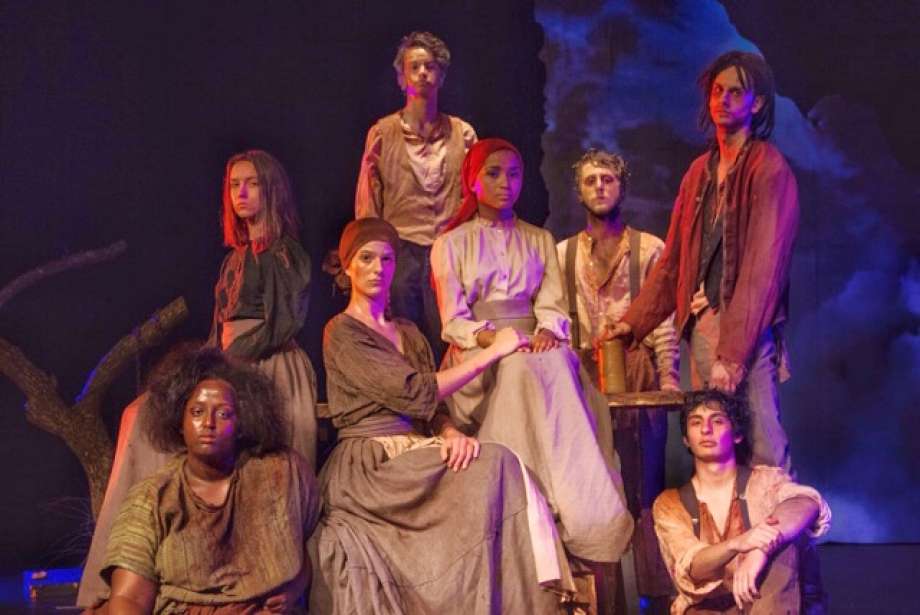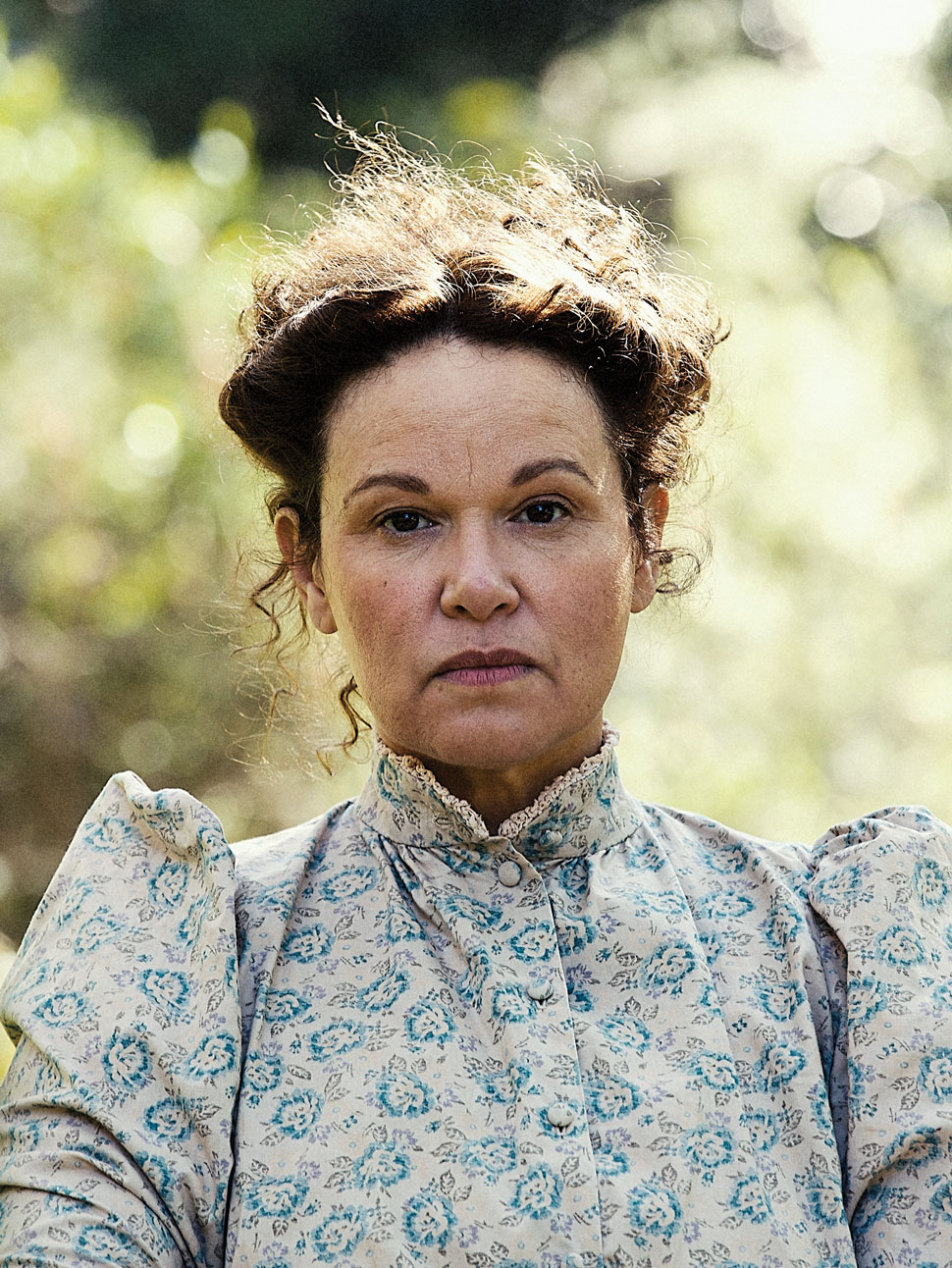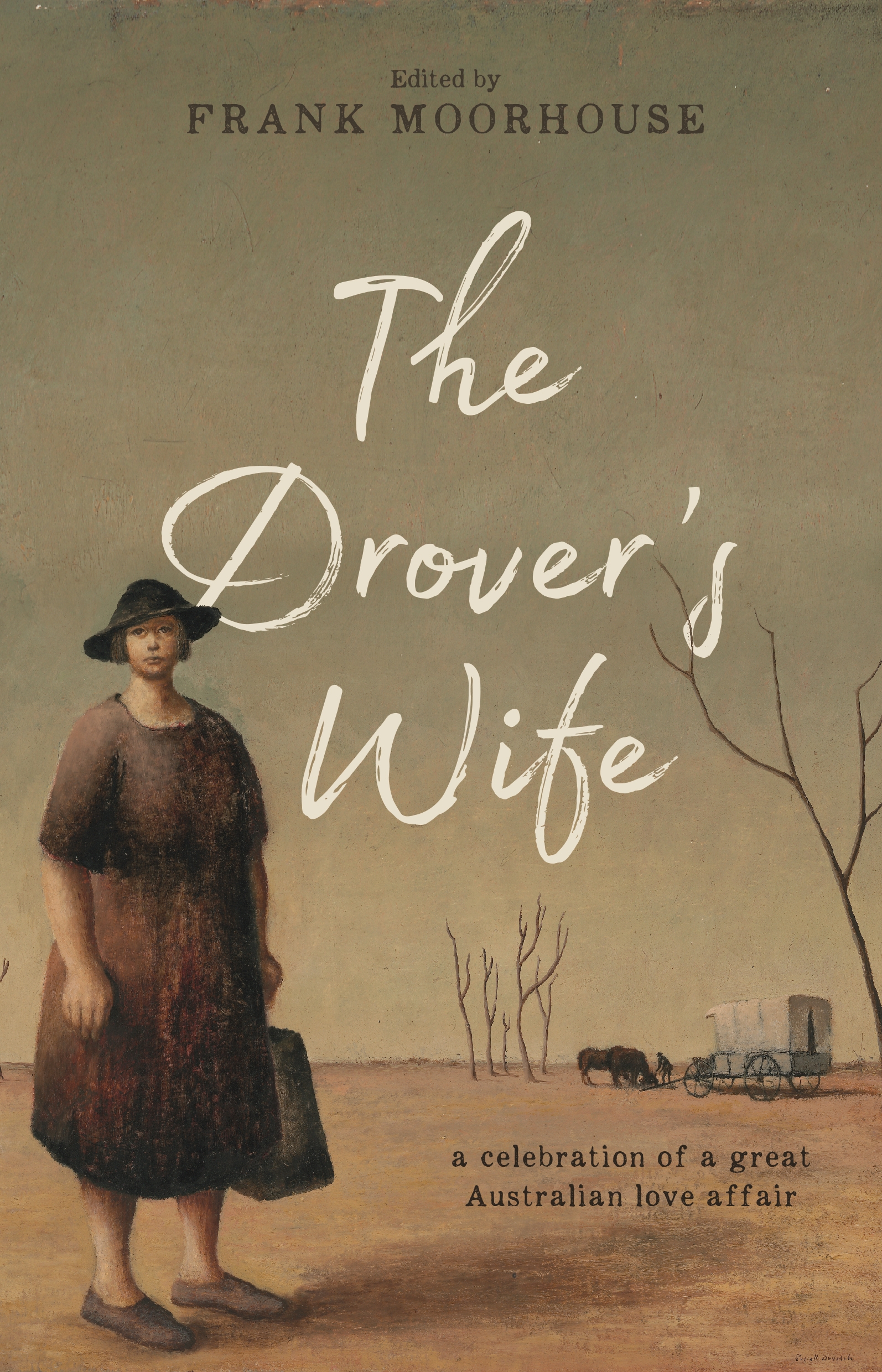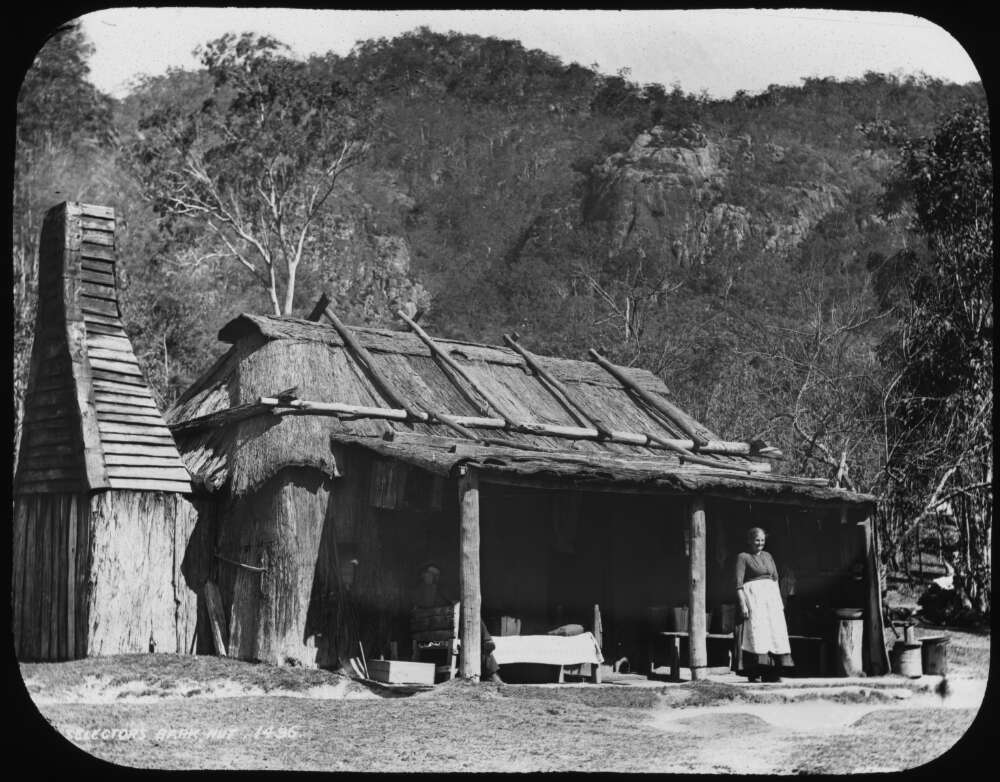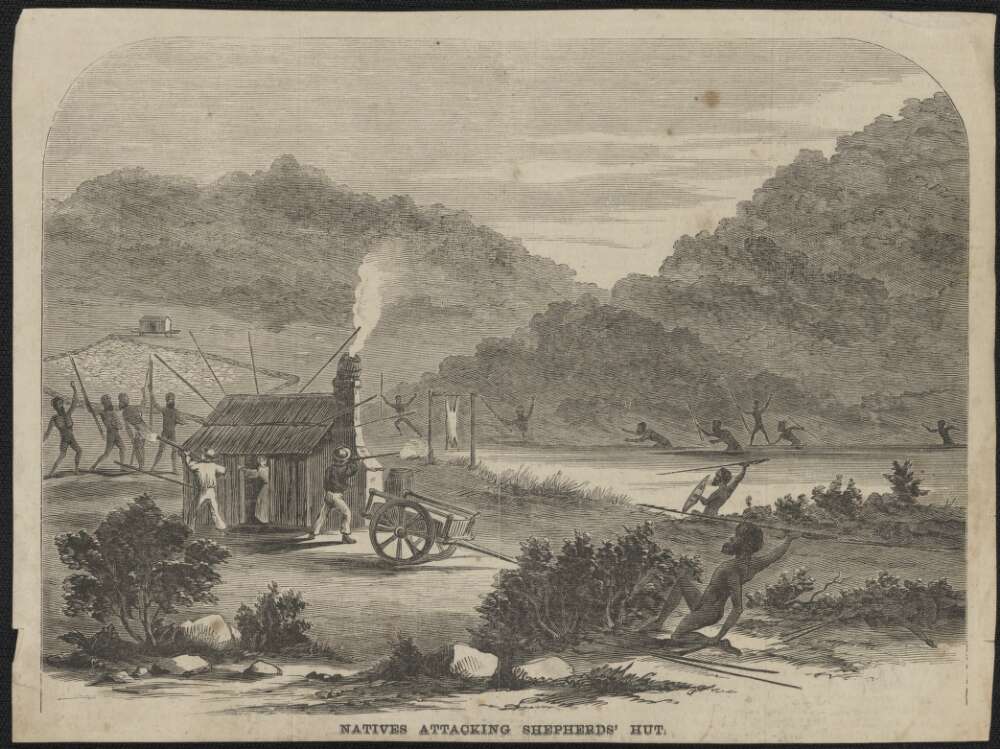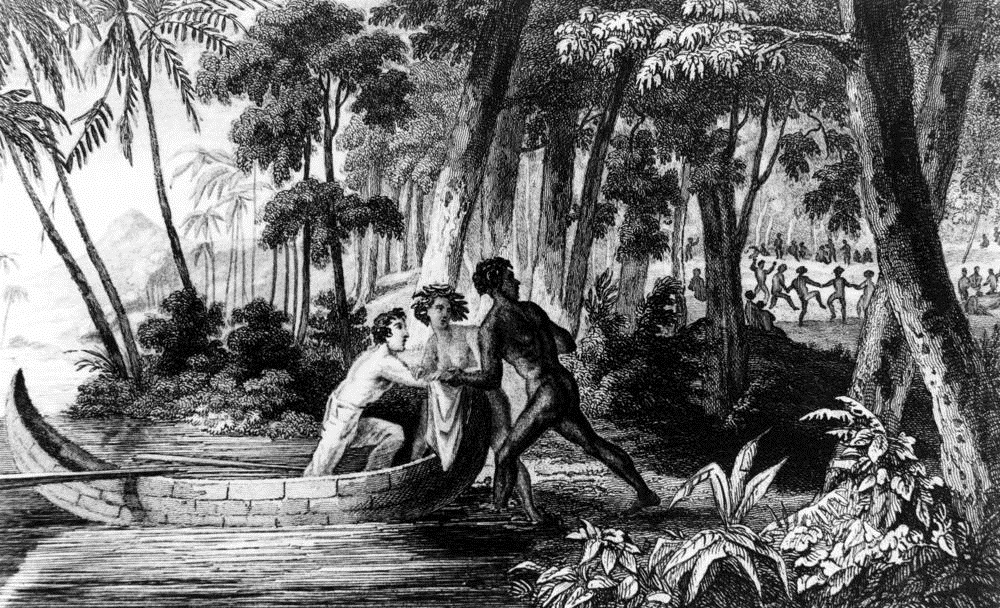AustLit
-
This case study is intended to demonstrate how Australia's literary tradition can be framed within the context of contemporary settler literature. While the 'origin story' here is Henry Lawson's short story "The Drovers Wife', this case study also tracks the archetypes and tropes that appear over more than a century of related works, culminating in Leah Purcell's recent play, also titled The Drover's Wife. This unit is particularly themed around the absenting of black identities in early works of Australia's literary canon and, as such, there is a noticeable shift in representations of characters and depictions of the nation's colonial history as these works move closer to our contemporary moment. This is due, in large part, to the interjection of Aboriginal writers like Gerry Bostock, Jack Davis and, of course, Purcell whose works speak back to and challenge the colonial narrative. Because of the way these texts are chronologically ordered, it may be tempting to assume that Aboriginal responses to colonisation are a recent phenomenon but this is certainly not the case. Rather, these texts demonstrate contemporary black writers appropriating a traditionally Western form of storytelling to expose silences within that very tradition. It may also be tempting to read into settler narratives a unified, progressive point of view about Lawson's story and those like it. If anything, however, this collection of stories should suggest that the ways in which writers and audiences imagine abstract concepts like 'the bush', 'the past' or 'national identity' is a fluid and contested process. Andrew Bovell's 2001 play Holy Day indirectly invokes the storytelling tradition that Lawson demonstrated in his 1892 short story, but Bovell offers a radically different and much more violent vision of frontier life. That's not the case with Luke O'Shea's nostalgic 2011 country song 'The Drover's Wife', which brings the more romantic elements of Lawson's story into twenty-first century Australian life. This grouping of texts is intended to provide teachers with new resources for bringing texts together and challenging students to explore these stories closely, as well as in much larger contexts. It should be noted that many of these stories include descriptions of extreme violence against Aboriginal peoples and women, including rape and murder.
-
See also Lindsay Williams's teaching resources: Challenging the Terra Nullius of the Mind
-
First appearing in The Bulletin in 1892, Henry Lawson 's short story The Drover's Wife is today regarded as a seminal work in the Australian literary tradition. Noted for it's depiction of the bush as harsh, potentially threatening and both isolated and isolating, the story opens with a simple enough premise: an aggressive--and presumably deadly--snake disrupts the working life of a bushwoman and her young children. Brave but cautious, the woman resolves to protect her children since her husband is, characteristically, away from home and of no help.
As time passes within the story, tension builds, and the snake's symbolic threat takes on layers of meaning as the sleepless heroine recalls previous challenges she faced while her husband was away. A series of flashbacks and recollections propel the story through the single night over which the action takes place, and by the time the climax arrives--the confrontation between the woman, her loyal dog Alligator, and the snake--readers have learned much about the heroine's strengths and fears, most of the latter involving the loss of children and dark figures who encroach upon her small, vulnerable homestead. To be sure, this "darkness" is highly symbolic, and Lawson's use of imagery invokes Western notions of good and evil as well as gendered and racial stereotypes.
-
"She is used to being left alone. She once lived like this for eighteen months. As a girl, she built the usual air-castles, but all her girlish hopes and aspirations are dead."
-
"Alligator pulls again. Thud! thud! Alligator pulls some more. He has the snake out now—a black brute, five feet long. The head rises to dart about, but the dog has the enemy close to the neck. He is a big, heavy dog, but as quick as a terrier. He shakes the snake as though he felt the original curse in common with mankind."
-
Kate Chopin lived in and wrote about nineteenth-century French Creole Louisiana and is generally recognized as a groundbreaking American author for works like The Awakening and the short stories listed below. Many of her works were considered controversial when published because Chopin often confronted issues of women's liberation and antiblack racism.
"Desiree's Baby" (1894) : Perhaps Chopin's most anthologised work, this gothic tragedy deals primarily with white supremacy and taboo interracial marriage. For that reason, this particular piece may serve as a better companion to Leah Purcell's version of The Drover's Wife than Lawson's. Consider, though, this passage from "Desiree's Baby" in which Chopin creates a tense mood much like the one found in Lawson's tale: 'Desiree awoke one day to the conviction that there was something in the air menacing her peace. It was at first too subtle to grasp. It had only been a disquieting suggestion; an air of mystery among the blacks; unexpected visits from far-off neighbors who could hardly account for their coming. The a strange, an awful change in her husband's manner, which she dared not ask him to explain.' Differences in colonisation and racialisation between the US and Australia would be an important part of including this story in a unit on 'The Drovers Wife' but the contrasts might also spark conversation about the more subtle allusions in Lawson's story.
"A Pair of Silk Stockings" (1897) : Despite the fact that this story takes place in an urban shopping district in the US rather than the Australian bush, Chopin's protagonist Mrs. Sommers has a great deal in common with Lawson's unnamed drover's wife. Both are long-suffering mothers who, above all, are tasked with providing for their children despite economic hardship. Similarly,through marriage, both women have seen their youthful promise wasted, though their plight is such that they have no time to dwell on what could have been. Consider the above quote from Lawson's story in relation to this passage from Chopin: 'The neighbors sometimes talked of certain "better days" that little Mrs. Sommers had known before she had ever thought of being Mrs. Sommers. She herself indulged in no such morbid retrospection. She had no time--no second of time to devote to the past. The needs of the present absorbed her every faculty.' Unlike the drover's wife, however, Chopin's Mrs. Sommers explores the potential for escape. The result is a more complex view into the psyche of a group of women from this time period.
"The Storm" (1898) : On the surface, this story reads as bodice-ripping romance about a wife's infidelity. While her husband and son are in town on business, Calixta is home alone when a sudden storm breaks and an unexpected visitor arrives--a former suitor named Alce. As the storm worsens, Calixta and Alce become more passionate with one another, culminating in their making love in a scene in which Chopin describes Calixta's body as 'knowing for the first time its birthright.' Here, then, is the interesting grounds for comparison between Calixta and the drover's wife: their vulnerability is determined, in part, by their sexuality and the potential for their breaking their wedding vows to absent husbands. What makes Chopin's tale so unique is that, like the storm, Calixta's sexual identity is decidedly natural, and there is no sense of shame or guilt implied at the story's conclusion.
-
Barbara Baynton's short story The Chosen Vessel originally appeared in slightly different form in The Bulletin as "The Tramp". Interestingly this version was collected alongside Lawson's "The Drovers Wife" in The Bulletin Story Book : A Selection of Stories and Literary Sketches from 'The Bulletin' [1881-1901], which is available in full-text through AustLit.
Published just four years after "The Drovers Wife", Baynton's dramatic narrative includes many of the key devices Lawson applied in his story. The central character, an unnamed bush woman, struggles with daily tasks associated with frontier life while also caring for a young child. Her husband, a shearer, is often absent from the homestead, leaving the protagonist particularly vulnerable. As in other stories included in this grouping, a tramp or 'swag man' regularly appears while the bush woman is alone, and his potential for violence drives the action of this story. Unlike Lawson's tale, the bush woman does not escape harm and is, in fact, brutally murdered. In another twist on Lawson's story, the dog that appears in Baynton's tale belongs to the tramp and is his co-conspirator, murdering a number of sheep while his owner kills the woman.
In 2007, Petty Traffikers adapted the story for the stage in a production also titled The Chosen Vessel. '
At last he was gone, and she, watching through the cracks inside, saw him when about a quarter of a mile away turn and look back at the house. Then he went further in the direction that she would have him go; but he paused again, turned and looked behind him, and, apparently satisfied, moved to the left towards the creek. The creek made a bow round the house, and when he came to it she lost sight of him. Hours after, watching intently in that direction for signs of smoke, she saw the man's dog chasing some sheep that had gone to the creek for water'
-
Like Armstrong's Drought, Katharine Susannah Prichard 's The Pioneers (not to be confused with her 1915 novel of the same title) is a one-act play set in the bush home of a husband and wife. In several ways, Prichard's drama also fits within genre conventions seen in Drought and Lawson's The Drovers Wife: isolation, hardship, distance within an intimate relationship, feminine vulnerability and looming, outside threats. Prichard's play deviates from these other works, however, by casting the threatening outsiders as escaped convicts. While the two convicts who appear in the play are initially threatening and have the potential to enact great violence, ultimately the female protagonist's great empathy reveals their inner goodness.
This depiction of escaped convicts is profoundly important not only to this play but the development of a national literature in Australia. Clearly, Prichard recognised what would later be called "the cultural cringe"--a belief that Australia was culturally isolated from and inferior to England and the US, in part, because of its history as a penal colony. Through central characters Mary and Donald Cameron, Prichard envisions the country that Australia will be--a place of prosperity through hard work but also the land of the fair go.
Mary's remark 'This country will be the redeemer . . . blot out all the old stains', hints at a future beyond the 'stain' of national convict origins. At the same time, the play does not engage with the other important aspect of Australia's colonial origins: the violent dispossession of Aboriginal people. Indeed, black Australians receive only passing mention in The Pioneers and, in both cases, are portrayed as potential threats whom Mary would be justified in shooting--ironically--in self defence of her home.
-
Mary: This country will be the redeemer . . . Blot out all the old stains.
-
Compare: Prichard's THE PIONEERS and Australian Aboriginal Bi-Centennial Activism
Using this protest button as a starting point, Prichard's The Pioneers can be serve as an entry point into a broader discussion of Australia's colonial history and legacies of national identity. This particular graphic is poignant in the ways it speaks back to important themes in the play, especially the birth of a nation out of a penal colony and the erasure of Aboriginal dispossession. While the date 1788 is highly symbolic, so are the broken chains and the Aboriginal flag.
-
M. S. Armstrong's on-act play Drought features husband and wife characters Joe and Ellie, whose farm, marriage and sanity are all threatened by the historic 1902 drought from which the play takes its name. As is the case in Lawson's "The Drovers Wife", the play opens in a humble bush dwelling, and its selector inhabitants are depicted as almost destitute as a result of harsh living conditions. As the stage directions indicate, however, Joe and Ellie are nearly exhausted--physically, emotionally and mentally--by the oppressive terrain. In this way, the drought which plagues their homestead parallels the potential for happiness that has been drained from their relationship: Ellie's beauty and Joe's mental stability have 'dried up' alongside their precious water supply.
This play is particularly interesting for its engagement with the tropes seen in the other works included here: a looming threat encroaching on a bush home, feminine vulnerability, and the separation of husband and wife. With all three cases, Drought inverts the tropes, so that it is destructive light rather than darkness threatening the home; Ellie, the wife, is endangered by her husband's potential for violence rather than an outsider's; and it is Joe, the husband, who is left alone to defend the house when the other partner is away (of course, Joe sends Ellie away for her own safety and she does not travel far before returning).
Australia's history of warfare should be a factor in unpacking this play and understanding Joe's metaphorical battle. Written in 1924, the play is set in 1902. In the intervening years, World War I has taken place, and the ANZACs have taken part in the Gallipoli Campaign. Importantly, Joe mentions having been involved in war, though because the play is set in 1902, he cannot be referring to Gallipoli. It's possible that he could be referring to the Second Boer War in South Africa (1899-1901) or even the Boxer Rebellion in China (1900-1901), as Australian forces played minor roles in both. Another potential explanation is that Joe is referring to the frontier warfare against Aboriginal peoples that made settlement possible. While war is clearly used symbolically in the play--good versus evil--the lack of historical detail also points to larger issues of memory and forgetting in Australia's colonial past.
-
Joe: I get thinkin' and thinkin', until it seems to me that this we're fighting, this that's killin' us, isn't just lack of rain, but a real live things, like a slinkin' filthy beast, that befouls the air and preys on life, suckin' out all beauty, all sweetness, and leavin' only corruption . . . . Look at you and me! Look at what we've come to!
-
Compare: DROUGHT and Bruce Robison's song 'Larosse'
Bruce Robison is a well-known singer-songwriter from Bandera, Texas. A gifted storyteller, Robison captures a sense of despondency and loss in the tune "Larosse" that echoes the events of Armstrong's play. One important comparison that could be made between this song and Armstrong's play is the way in which the horses--Larosse and Greygown in the play--are representative of the settler families in the two works. They both have emotional attachments to family moments, they both worked in the settling of the land, and, in both cases, their loss represents a turning point in the relationships between husband and wife. It is worth pointing out that the song references a the horse 'flying' with an 'Indian yell'. This seemingly minor detail could prompt discussion on the romanticisation of Indigeneity in the US and how that measures up to representations of Aboriginality in Australia.
-
Compare: DROUGHT and Josh Oliver's song "Get Along Little Yearlings"
Josh Oliver is a folk singer from Tennessee. This song, "Get Along Little Yearlings," is told from the perspective of a nameless settler who is in the process of relocating his family and livestock to Texas after the Civil War (1861-1865).The instances of struggle and loss are numerous across the song's verses, which, together, narrate a series of near-catastrophes in several states. "Natural" hardships are especially prominent in one verse--"There's bears in the woods and there's wolves and there's Injuns/ There's quicksandy holes and there's mountains of stone"--but these lyrics need to be unpacked for the way in which they depict Indigenous peoples. The term "injun" is pejorative, as is the listing of Native peoples alongside bears and wolves--two predatory, non-human, animals. Less obvious though equally problematic are the politics of dispossession--this settler family can only hope to have a new place to start over if Indigenous peoples lose their native land. Oliver's rendition of the song is cover of the tune originally recorded by an artist called Jimmie Driftwood.
-
Betty Roland's one-act play Morning finds George and Lucy together in their secluded log hot the morning after their son is born. While the two central characters have a great deal of affection for one another, their resources are extremely limited. Because he lacks the wealth and power to provide for his new family, George reveals to Lucy a scheme to rob gold miners travelling from the fields into a nearby city. As the partners debate George's plan to become a highwayman, both reveal that they are already outlaws of sorts. While details are limited, it appears George has experienced convict labour and Lucy has abandoned children to start a life with him. Fortuitously, a drunken and braggadocious Stranger appears at their door, carrying a substantial amount gold.
Like Drought, this play features the major tropes in found in Lawson's short story but turns them on their heads. While the Stranger does threaten the fragile home-life George and Lucy try to hold together, it turns out that he is in much more danger than they. Too, while George originally plans to leave Lucy and their son alone while he goes about to rob miners, in short order the miner comes to them, providing the means by which the partners can actually stay together.
There is also a thematic overlap with Prichard's The Pioneers in that Australia represents a new life beyond old sins, but the husband and wife of this play are much more implicated in an even more serious crime than occurs in Prichard's play. As a result, these two, George and Lucy, are more complicated protagonists and progenitors of a promising country just born. Australia, like their newborn son, may indeed have a prosperous future ahead. But this play suggests that such a future has been made possible through violence and moral ambiguity. This conclusion could be used to open up discussion on the nations broader colonial origins, including frontier warfare and dispossession.
-
Lucy: George . . . this is a new life . . . a new country . . . we'll see that things are different for him.
-
Compare: MORNING with Johnny Cash's song "Ned Kelly"
Consider Cash's depiction of the infamous bushranger Ned Kelly as a freedom-loving victim of circumstances in relation to Roland's characterisation of George Burton in Morning. Both are romanticised as misunderstood men of action and are linked to the birth of Australia as a nation.
-
'In 1944 Russell Drysdale accepted a commission from the Sydney Morning Herald to record the drought devastation and associated soil erosion in western New South Wales. The drover’s wife was one of the paintings that resulted from this trip.
'In this painting Drysdale has depicted the vast, flat and barren landscape with dead trees and a cloudless sky. A monumental woman—the drover’s wife—is situated in the foreground. Although she wears a drab, unfashionable dress, a nondescript hat and flat lace-up shoes, she stands assuredly, looking out towards the viewer with her feet planted firmly on the ground. Her face and eyes are gentle. The drover is in the background, with his horses and covered wagon.
'Drysdale created a new vision of Australia. His subjects are not pioneers struggling to tame the bush or outback, but resilient women and men seeking to find a relationship with the ancient landscape. Although The drover’s wife documents the drought of 1944, it is also an allegory for the non-Indigenous Australian relationship to the land.'
Text © National Gallery of Australia, Canberra 2014
From: Collection highlights: National Gallery of Australia, National Gallery of Australia, Canberra, 2014 -
Gerry Bostock's play Here Comes the Nigger has never appeared in complete form in print: two scenes printed in Meanjin are readily available and a third scene can be found Concert of Voices : An Anthology of World Writing in English. That said, the play has garnered critical praise as an important early example of Aboriginal theatre in the twentieth century. John McCallum writes in Belonging : Australian Playwriting in the 20th Century that, along with Robert James Merritt's The Cake Man, Bostock's play
'reversed the bush-hut staging tradition so that the fringe-dwelling black characters who turned up at the doors of white pioneers in the plays of Vance Palmer, George Landen Dann, and Katharine Susannah Prichard were now the focus of attention. The sets represented houses teeming with Aboriginal life, with occasional intrusions by white bureaucrats and social workers, the new outsiders'
The play's central character, Sam, is a blind Aboriginal poet caught in the maelstrom of Australian racial politics. Torn between his brother and countrymen and his white girlfriend, Sam's conflicted attempts at reconciliation are continuously met with disdain and, eventually, violence. In the scene appearing in Concert of Voices : An Anthology of World Writing in English, Sam recites a poem titled 'Black Children,' a call to arms for Aboriginal people to demand justice from the Australian government and unite around issues such as land rights. The following stanzas are especially pertinent in that they expose the silenced history of frontier violence committed by white colonisers:
Sam: This patronising white
Has murdered our people in hateful spite
And bloody thirst
Because we lay claim to this land first!
Our land, our culture and our women
He rapes with a lecherous grin,
While society turns its back on his immoral sin
And whispers an apathetic sigh
While our people are left to starve and die.
-
700421assertion
Jack Davis's best-known play, No Sugar focuses on the ongoing dispossession of Aboriginal people after the so-called 'closing of the frontier'. Set on reserves in the 1930s, the play depicts the rich complexity of Aboriginal life in the face of bureaucratic hypocrisy. Corruption runs through government officials, from the racist Chief Protector of Aborigines to the predatory superintendent of an Aboriginal settlement down to prejudiced police officers. Nevertheless, the Millimurra family fights for cultural preservation, continuing their songs and bringing new children into the world through traditional customs.
In terms of its relation to the stories collected here, No Sugar is unique in that it chronicles the continuous disruption of Aboriginal homes, both in terms of domestic spaces but also, more broadly, in forced removal from country. As in Bostock's play, the outsiders in this case are white Australians. To Davis's credit these outsider characters also are more complex than the one-dimensional Aboriginal characters who loom on the periphery in works like Lawson's. Davis's play builds on these works by presenting a different perspective on outsiders' potential to inflict violence: there is physical violence in this play, to be sure, but No Sugar makes clear that colonisation relies on institutional violence, as well.
Other familiar devices and themes appear in Davis's play. Australian nationalism factors into the characterisation of black and white characters alike, as one memorable scene depicts Indigenous men and women undermining Australian Day celebrations. Christian allusions are also present, particularly the birth of Jesus, though in this telling Mary and Joe(seph) are Noongar people. And, while they are not as central to the action as Alligator is in Lawson's "Drovers Wife", dogs make a few noticeable appearances throughout the play.
-
'There is a happy land,
Far, far away.
No sugar in our tea,
Bread and butter we never see.
That's why we're gradually
Fading away.'
-
While Andrew Bovell 's gothic drama Holy Day is, in many ways, clearly drawing from the literary tradition stemming from tales like The Drover's Wife, this contemporary account of isolation in the bush reflects the monumental shift in perspectives on Australian history that occurred over the twentieth century. Like the other works included in this unit, the action of Holy Day is mostly set in a 'simple bush cottage, tenuous shelter against harsh surrounds'. In this case, the cottage is actually referred to as The Traveller's Rest, an inn located 'between distant settlements', somewhere in central Australia. The stage directions offer few specifics about exact location, simply evoking 'The white frontier. The mid-nineteenth century'. Nora, the proprietor, runs the inn with the assistance of her adopted daughter Obedience, a mixed-race teen who Nora 'raised white' after she was supposedly abandoned by her Aboriginal mother. When three suspicious travellers arrive at the inn just before a storm, the fact that Nora and Obedience are vulnerable, isolated women creates tension between them and one of the men, the predatory Goundry--although, it must be said that Nora is, perhaps, not as 'vulnerable' as many would suspect.
Holy Day is, in a sense, a mystery, as the cast tries to determine who is responsible for the nearby mission having been burned, the minister having been killed, and his infant daughter having been stolen. Goundry immediately accuses the nearest Aboriginal mob, though it is almost immediately clear they were not involved. Instead, a lone black woman is taken prisoner at the Rest and interrogated. As the tension builds toward conclusion, the play becomes increasingly more violent: cast members inflict physical and emotionally brutality on one another based on race, gender and class, and much of this violence, including rape, is discussed openly in the dialogue.
This is a challenging play, not only because of the scale of violence but also because it is so steeped in Australia's colonial and national history. Bovell brings together convicts, pastoralists, Aboriginal massacre, the Stolen Generations and the 'lost child' trope over five acts, making this a dense, difficult work to unpack. That said, it stands as an important contrast to works like Lawson's and a potentially important companion piece to Leah Purcell's The Drover's Wife. Particularly important in that regard is Obedience's ability (and inability) to tell her story as a black woman. 'I have a tongue and I will use it' she says at one point near the conclusion. Bovell seems to use this character--and this play--as a means of 'speaking back' to the whitewashing of colonial history.
-
Nora: You take what you need out here. You take and then you move on and you take from somewhere else. That's how you survive out here.
-
Writing for the Houston Chronicle in response to a controversial production of Bovell's Holy Day, Alice Savage asks How Edgy Should High-School Theater Be? The Carnegie Vanguard Theatre group took home top prize in 2016's statewide drama contest despite calls for censorship by some parents. Savage notes in her article that the controversy has actually inspired students to learn about the violent history behind their dramatic performances:
"With the support of our community, the show will continue to challenge. The students involved in the production have had long talks about the motivations of the characters and their demons. They have dug into history and social issues. And they have not flinched to portray desperate people whom audiences hate or pity or both. The result is that Carnegie has won the best actor award in every performance so far, along with numerous all-star cast and other medals."
-
Sydney-born country musician Luke O'Shea contributed this song to the Drovers Wife canon in 2011, with the release of his fourth studio album, also titled The Drovers Wife. In 2013, the tune won the Country Music Australia Award's Heritage Song of the Year, an honour O'Shea would again in 2014, 2015 and 2017 for other songs.
O'Shea's song is an ode to Lawson's original story and a lament on modern vocations that take husbands away from their wives at home. The speaker first summarises Lawson's narrative, then speaks of his own father's absence as a travelling salesman. The final verse connects the historical drover to musicians like O'Shea, who spend long stretches touring with their bands while their families remain at home. For the verse, O'Shea borrows from Tommy, the eldest son in Lawson's story, who promises “Mother, I won't never go drovin'; blast me if I do!”
To read the full lyrics on the artist's website, click here.
While comparisons between Lawson's story, O'Shea's song, and Purcell's play will likely inspire discussion amongst students, this tune could also be juxtaposed with the Josh Oliver's "Get Along Little Yearlings" in order to think through varied perspectives on migration/mobility, hardship and family unity in two musical settler narratives.
-
Leah Purcell's version of The Drover's Wife is not a retelling of Lawson's original story so much as it is an expansion of it. While the setting is familiar--'a two-room shanty, in the dense scrubland'--this tale takes place after the events related in Lawson's text. Of course, the character 'the drover's wife' is once again the protagonist, but in Purcell's telling she is given a name--Molly Johnson--and an origin story predating her marriage to the still noticeably absent drover. Purcell also adds layers of characterisation to the Aboriginal man who appears in this iteration, and, in turn, brings Indigenous experiences in colonial Australia in from the narrative periphery.
As she does with Molly, Purcell fleshes out the Aborigine archetype central to this story. He is also given a name--Yadaka of the Guugu Yimithirr, adopted Ngambri Walgalu--and a backstory of his own. Unlike other stories in this collection, his presence is immediately established and he remains present throughout the narrative. More importantly, Yadaka and Molly form a deep bond over the course of the play, brought together by their vulnerability, the violence of others and their own buried histories.
Purcell recasts several of the tropes seen in this collection of texts. There is, for instance a supernatural element, but the spirit who appears to Molly is not at all menacing. And while several 'outsiders' show up at the Johnson shanty, it is Mary and her father who are the original outcasts for his having transgressed racial boundaries in loving Molly's mother, a Ngambri Walgalu woman called 'Black Mary'.
Much like Bovell's Holy Day, this play depicts brutal acts of racially- and sexually- motivated violence on stage in order to confront contemporary audiences with silenced aspects of Australia's colonial history. The play's finale also suggest that reconciliation is not a completed project; indeed there is much unfinished business for Molly and her son Danny who, having claimed their newly discovered Aboriginal identity set out on a Western-style revenge quest for justice.
-
Drover's Wife: It's the way of life out here. Everything's a gamble.
-
Watch: Rea Garvey sings "Black is the Colour of My True Love's Hair"
The traditional Gaelic tune "Black is the Colour of My True Love's Hair" is featured prominently in Purcell's version of The Drover's Wife. In keeping with the play's subversive nature, Purcell's application of the song points to Australia's black history. This version is performed by Irish singer Rea Garvey.
-
Watch: Leah Purcell on the origins of THE DROVER'S WIFE
In this brief clip, Purcell discusses how she interjected her own family history into Lawson's classic tale.
-
"I was heavily influenced by the original story. But I've activated all the characters. In my version, I have brought them to life for the stage and reinvented the conversations and action that might have taken place. Weaving my great-grandfather's story through the play has given it its Aboriginality so to speak, and I've embellished the story to give more depth and drama for the stage."
-
Watch: Students react to seeing a production of Purcell's THE DROVER'S WIFE
"A group of twenty teenagers from Shoalhaven High School have gathered with their teacher to catch the train 3 hours to Belvoir to see Leah Purcell's "The Drover's Wife". [source: Belvoir YouTube channel]
-
"The subversive nature of this work is readily appreciable. It co-opts a mainstream Australian historical icon and prompts a question as to what other icons of white Australia have a black history. The defiance oozing from this piece is not so readily accessible but it is there to see for those who will look."
-
The Drover's Wife : A Celebration of a Great Australian Love Affair, an anthology edited by novelist Frank Moorhouse, chronicles the artistic influence Henry Lawson and his story "The Drovers Wife" have had on Australian culture. Alongside a number of brief essays written by Moorhouse, the book includes a number of excerpts and full-length short stories by a host of writers who have published works responding to the original tale--including Moorhouse's own story The Drover's Wife (1980), as well as Murray Bail's, also titled The Drover's Wife (1975).
Also reprinted in this text is the essay "The Australian Bush-Woman" published by Lawson's mother, Louisa Lawson, in 1889. Moorhouse argues that this essay was highly influential on Lawson's depiction of the drover's wife, published three years later. As the title might suggest, the essay is primarily geared toward constructing the archetype of bush women that the drover's wife has come to represent. She writes that
'To generalize roughly, one must say that the bush-woman's life is, however, on the average, a sad one. The Englishmen, Germans, Scandanavians, and indeed, all the men of whatever nationality who took to bush life were generally of rough, coarse character, or, if they were not of such nature originally, the solitude and the strange, primitive life must have made them so. In those remote and isolated spots, man is king and force is ruler.'
-
Images of settler's homes in the bush capture a unique tension found in this collection of stories. The home, humble as it may appear, suggests domesticity, family, home and belonging. Always contrasting the home, though, is the starkness of the bush, which, for settler populations of the time, often represents hardship, emptiness, exposure and isolation.
-
As the colonial frontier progressed further and further inland, violence between Aborigines and settlers became more and more common. One popular depiction that recurred in paintings and illustrations from the mid-nineteenth century on showed Aboriginal warriors attacking settlers' homes. Typically, these images depict the settlers as greatly outnumbered by the Aborigines, many of whom loom on the periphery in shadowy detail. Images like these helped popularise the notion that Aboriginal peoples were the main aggressors and that settlers were, in turn, merely defending their land and homes.
-
As this collection of texts demonstrates, white femininity was a complex component of frontier and bush identity in the nineteenth century. On the one hand, the authors all acknowledge that women played crucial roles in the physically settling the land, both through physical labour that was generally not expected of women and in the acts of domestication thought of as home-making. On the other hand, traditional gender norms about feminine purity and vulnerability play an important role in these works, too. The most well-known example of the latter in Australia's colonial past is the 'captivity' of Eliza Fraser in 1836. In 2016, Larissa Behrendt published Finding Eliza : Power and Colonial Storytelling in which she explains how the Fraser captivity narrative played a critical role in creating negative stereotypical representations of Aboriginal people that very often have little or no connection to historical realities.
-
- How do memory and the act of remembering work as narrating and character-building devices in these stories?
- What are the roles of the stranger, the outsider, the intruder in these stories? What impacts do they have on the action and central characters? What is their relationship to the land and how does that make them different from the central characters?
- Why are bush shanties so central to these stories? What might they symbolise?
- What role do service animals play in these stories? How do they function as animals who are not livestock but not quite pets?
- Read together, what do these plays suggest about the role of marriage--or the relationship between husband and wife--in settling the bush?
- What do Aboriginal voices say when they speak back in these works?
- What do these works suggest about the relationship between Australia the colony and Australia the nation?
- What do these works teach us about intertextuality and the cultural value placed on certain stories?
- Why is music an important part of many of these texts? What does music add to this kind of storytelling?
- How does Australia's literary tradition benefit from the inclusion of more and often dissenting perspectives in its works?
- What do these stories tell us about changes to Australian culture between 1892 and 2017?
-
THE DROVERS WIFE: Alligator fighting the snake: "He shakes the snake as though he felt the original curse in common with mankind." (Lawson 83)
THE CHOSEN VESSEL: Especially toward the story's conclusion, the symbolic image of 'the lamb' is particularly prevalent.
DROUGHT: Joe: "I've been up against a devilish power that's too strong for a man" (Armstrong 68). After sending Ellie away, he shakes his fist and declares that he's going to do battle with "the dull red unnatural sun" (67) This could easily be an allusion to battle with the Devil, whose name "Lucifer" means "bringer of light" and who is referred to in Isaiah 14:12 as "morning star" and "son of the dawn," both of which invoke the sun.
MORNING: George: "Think of being back at the beginning of things again . . . like this chap. (In sudden prayer) Oh God . . . don't let him do the kind of things that I've had to do. Then later, to Lucy, George says: "It's a dam' crime that things should be as they are ... for women". This could be read as an allusion to Eve's punishment for Original Sin.
NO SUGAR: Mary and Joe are a clear allusion to Mary and Joseph of the New Testament. Their infant child, then, has some correlation to Christ, either as a redeemer or as a potential martyr--the play ends before we find out. It's also noteworthy that the play ends with the family returning to Joe's ancestral land, which perhaps mirrors Jesus's eventual return to Nazareth from Bethlehem.
You might be interested in...


